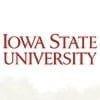Explore all the information on
Porcine circovirus diseases
Porcine circovirus diseases have traditionally been defined as those associated with porcine circovirus 2 (PCV-2) infection. However, this terminology should be revised because the advent of the novel porcine circovirus 3 (PCV-3) may expand the clinicopathologic outcome caused by porcine circovirus infections. Porcine circovirus 1 (PCV-1) is still considered a nonpathogenic agent for swine.
Historically, PCV-1 was described as a noncytopathogenic, picornavirus-like contaminant in the porcine kidney cell line PK-15 (ATCC-CCL33). This agent was later shown to be a small, nonenveloped virus containing a single-stranded, circular DNA genome; it was named porcine circovirus (PCV). PCV antibodies in swine were found to be widespread, and experimental infections with this virus in pigs did not result in clinical disease, suggesting that PCV was nonpathogenic.
PCV-2 has been further associated with a number of disease syndromes in pigs, so the term porcine circovirus disease (PCVD) was proposed as a collective name. The terms PCV2-systemic disease (PCV2-SD) and PCV2-reproductive disease (PCV2-RD) have been proposed to replace PMWS and PCV2-associated reproductive failure, respectively. Moreover, it is currently thought that the most important PCVD is the PCV2-subclinical infection (PCV2-SI), which is linked with growth retardation without overt clinical signs. Porcine dermatitis and nephropathy syndrome (PDNS) is also included as a PCVD, although there is still no proof that PCV2 is the antigen linked with this immunocomplex disease.
PCV-3 has been recently linked with reproductive disorders and multisystemic inflammation associated with vasculitis, as well as with PDNS. Like the other porcine circoviruses, PCV-3 is found worldwide.
Introduction: Wasting of post-weaning piglets is a problem of global pig farming. The most important viral diseases linked to this problem in Mexico are porcine circovirus type 2 (PCV2)-systemic disease, porcine reproductive and respiratory syndrome (PRRS) and blue eye disease (BED); the latter, is only present in Mexico. These diseases cause great economic losses and predispose to the development of co-infections, mainly with bacteria. The objective of this work was to...
Comments : 0
Recommendations: 0
Introduction: Porcine reproductive and respiratory syndrome virus (PRRSV) and Porcine-2 (PCV2) infections remain major causes of significant economic losses in pig production worldwide. During the last years, new pig farms were established in Albania, considering the increasing demand of the meat processing industry. No published data exist regarding PRRSV and PCV2 infections in Albania. Materials and Methods: The present study reports on a breeding...
Comments : 0
Recommendations: 0
Introduction: In many cases, vaccination against PCV2 and Mycoplasma hyopneumoniae is done around weaning when piglets have to cope with many stressors. The pig’s performance around weaning is critical for the later performance and the degree of variability after weaning has a substantial impact on the variability at the end of finishing. The objective of this trial was to determine whether the negative impact of a vaccine on the weight gain shortly after...
Comments : 0
Recommendations: 0
Introduction: The interpretation of the ELISA or PCR results for PCV2 detection is often difficult. The aim of the study was to compare PCV2 seroconversion, viremia, shedding in feces and presence in oral fluid in three Polish farms. Materials and Methods: The serum, feces and oral fluid samples were obtained from two, two site farms with low level of biosecurity and hygiene (farm 1 and farm 2), and from one farrow-to-finish farm with very high...
Comments : 0
Recommendations: 0
Introduction: Porcine Circovirus Type 2 (PCV2) is an important pathogen related to several disease syndromes in pigs, collectively named PCVD (PCV disease). PCV2 strains are currently classified into four genotypes: PCV2a, PCV2b, PCV2c and PCV2d. The latter is considered an emergent genotype. It has been, indeed, increasingly isolated worldwide, mainly in cases of suspected vaccine failure, rising concerns about vaccine protection and possible ongoing genetic...
Comments : 0
Recommendations: 0
Introduction: Post Weaning Multisystemic Wasting Syndrome (PMWS) was first identified in Canada in the mid-90’s. Since then, it evolved to the worst disease of modern swine industry as a complex of PCV2 diseases i.e. Porcine Circovirus (associated) Diseases (PCV(A)D). It is now present in all parts of the world. PMWS is characterized by a sudden wasting in weaners. Later PCVD is more often seen in the finishers and as a reproductive problem. The aim of the present paper is...
Comments : 0
Recommendations: 0
Introduction: Little is known about oral fluid qPCR for PCV2, viral load and threshold values associated with clinical or sub-clinical disease. The aim of this study was to evaluate the usefulness of OF-based surveillance of PCV2 shedding on farms with or without clinical or subclinical PCVD. Materials and Methods: Shedding of PCV2 in OF was monitored at 2-weekly intervals in six wean-to-finish all-in-all-out farms. Sampling commenced at arrival (28...
Comments : 0
Recommendations: 0
Introduction: Porcine circovirus type 2 (PCV2) and co-infection with Mycoplasma hyopneumoniae (M.hyo) plays a primary role in the porcine respiratory disease complex. Acute phase proteins (APPs) have been proposed as suitable veterinary biomarkers to monitor welfare, and inflammatory response. In addition, C-reactive protein (CRP) has recently been postulated as a potential biomarker use for vaccine safety studies and the measurement of haptoglobin (Hp) may be...
Comments : 0
Recommendations: 0


Fermentation products of Cordyceps militaris enhance performance and modulate immune response of weaned piglets
Suggested link
Introduction: PCV2 infections can play an important role in swine respiratory disease. A feasible way of screening for PCV2 infections at herd level is cross-sectional blood sampling and qPCR analysis on pools of serum samples. The present study describes the results from VirusCheck, a service tool that includes herd information and serological investigation for PCV2. Materials and Methods: For each herd (n=146), blood samples were collected from pigs...
Comments : 0
Recommendations: 0
Introduction: The objective of this study was to investigate the efficacy of two combinations of vaccines against PCV2 and Mycoplasma hyopneumoniae ( M hyo ) under Brazilian field conditions. Materials and Methods: This study was performed in a farrow-to-finish farm located in Minas-Gerais province, with a history of clinical PCVD and enzootic pneumonia during growing/finishing, and lack of homogeneity at slaughter time. A group of 896...
Comments : 0
Recommendations: 0
Introduction: Based on serological studies, it is assumed that PCV2 is ubiquitous in the pig industry across the world. The purpose of this study was to evaluate the benefit of PCV2 piglet vaccination on ADG and mortality rate from weaning to slaughter in a herd subclinically infected with PCV2. Materials and Methods: The study was conducted in a farrow to finish farm located in Brittany, France, positive for PRRSv, PCV2, APP, Mycoplasma hyopneumoniae,...
Comments : 0
Recommendations: 0
Introduction: Measuring the level of PCV2 virus and/or the level of IgG/IgM in blood samples can be used to assess if pigs are infected or not during the later stages of fattening. The purpose of this case study was to investigate if PCV2-virus is detected or serologically active in fattening herds with pigs vaccinated at 4 weeks (± 7 days) of age with Porcilis® PCV, CircoFLEX, Circovac or Suvaxyn PCV. Materials and Methods: In seventeen herds...
Comments : 0
Recommendations: 0
Introduction: In this study, we compared the production performance of PCV2 vaccinated animals in terms of weight gain, average daily gain and mortality in two commercial farms. One farm vaccinated with Circovac (Merial Animal Health) and the other with Fostera PCV (Zoetis Animal Health) at 3 weeks of age. Both of these vaccination programs were compared against Porcilis® PCV (MSD Animal Health). The farms, which are located in the northern part of Luzon, use...
Comments : 0
Recommendations: 0
Introduction: Porcine circovirus 2 (PCV2) is the etiological agent of postweaning multisystemic wasting syndrome. PCV2 ORF3 protein is a nonstructural protein known to induce apoptosis, but little is known about the biological function of ORF3 protein. Therefore, we undertook this study to map ORF3 protein epitopes, characterize putative nuclear localization (NLS) and nuclear export (NES) sequences in ORF3, compare Virus kinetics and animal pathogenicity between wild...
Comments : 0
Recommendations: 0
Introduction: Porcine Dermatitis and Nephropathy Syndrome (PDNS) is a clinical sign of Porcine Circovirus Associated Disease (PCVAD). PDNS is characterized by purple skin lesions with black center, fever, and lethargy, mostly affecting fattening pigs between 12-16 wks old. Vaccination is one of the tools to handle PCV2 and PDNS. This case report illustrates the real situation in pig farm in Thailand that suffered from PDNS for years and how the farm changed vaccination program...
Comments : 0
Recommendations: 0
Introduction: Vaccination against PCV2 and Mhyo has become a standard measure in the swine industry worldwide. The objective of this study was to compare the efficacy of a freshly mixed PCV2 and M hyo combination and a pre-manufactured PCV2/M hyo vaccine combination against a PCV2b challenge. Materials and Methods: The trial was conducted as a randomized, blinded vaccination-challenge efficacy study with 55 CDCD pigs. Animals were included at about 21 days of...
Comments : 0
Recommendations: 0
Introduction: Postweaning multisystemic wasting syndrome (PMWS) is still one of the major economic problems for the pig industry. To confirm PMWS, it is necessary to fulfil the following diagnostic criteria: 1) specific clinical and necropsy findings; 2) specific histologic lesion and 3) presence of moderate to significant amount of PCV2 by immunohistochemistry (IHC) or in situ hybridization (ISH). The fact that the virus is ubiquitous in pig populations worldwide,...
Comments : 0
Recommendations: 0
Introduction: Porcine circovirus type 2 (PCV2) infections in pigs is a major challenge for the swine industry as it causes significant production and economic losses to producers worldwide. Timely detection of PCV2 in herds is important in order to minimize the spread of infection and reduce economic losses. Current diagnostic methods such as ELISA and PCR are not suitable for field use because of the need for expensive equipment, trained technicians, and a specialized...
Comments : 0
Recommendations: 0


Fermentation products of Cordyceps militaris enhance performance and modulate immune response of weaned piglets
Suggested link
Introduction: Porcine circovirus type 2 (PCV-2) is the causal agent of the post weaning multisystemic wasting syndrome (PWMS). This virus is different from PCV-1 that is non-pathogenic. Globally PCV-2 strains are classified in two genogroups: a and b. PCV genome contains two major ORF that encode Rep and Rep’ proteins associated to the viral replication and the capsid protein (Cap) that is the unique structural component of the virus. The Capsid protein of...
Comments : 0
Recommendations: 0
Introduction: Parvoviruses have been circulating in the global pig population for some time. So far, six porcine parvoviruses have been described in pigs including the classical PPV1 commonly associated with reproductive failure in breeding herds and newly recognized PPV2, PPV3, PPV4, PPV5 and PPV6. An association of porcine circovirus type 2 (PCV2) and PPV1 (also known as the classical PPV) or the PPV2 with porcine circovirus associated disease (PCVAD) has been established. The...
Comments : 0
Recommendations: 0








.jpg&w=3840&q=75)








